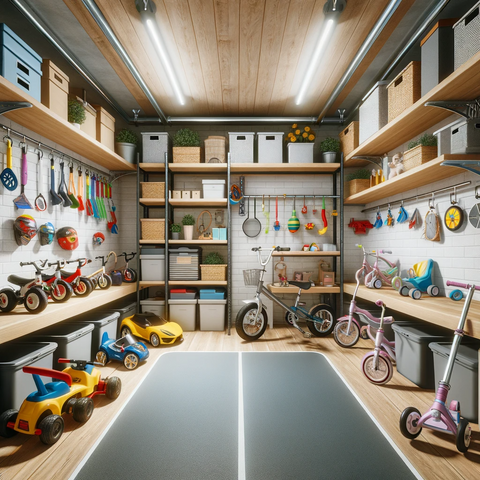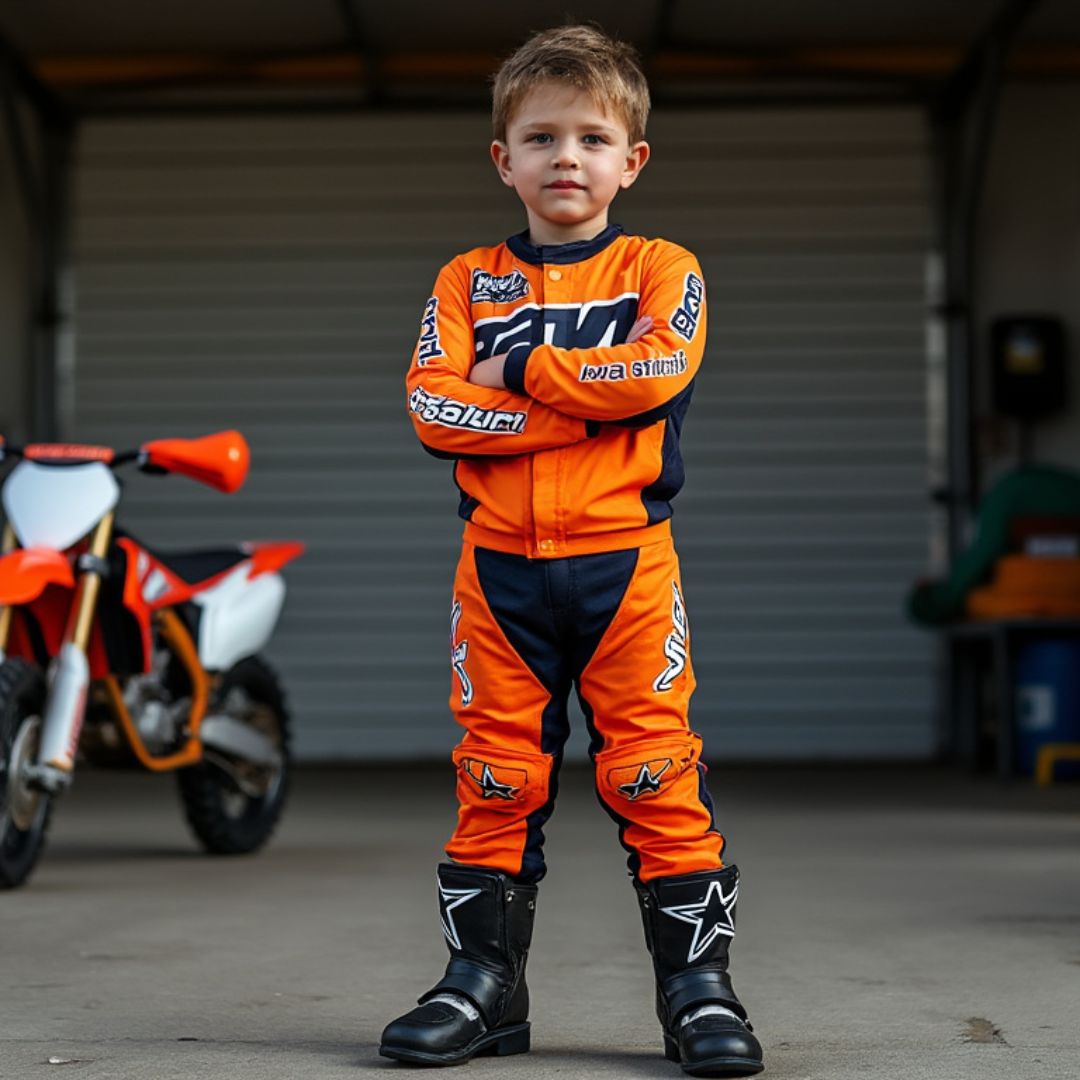
If you’ve got kids who adore zipping around on petrol ride-on toys, you know how much joy these little machines can bring.
But just like a car, these toys need some TLC to keep them running smoothly and safely through the seasons.
So, let's dive into how you can protect your investment and ensure it keeps bringing smiles to your children's faces, year after year.
Winter Care
When the chill sets in, it’s crucial to protect your child’s ride-on toy from the cold's harsh impacts.
Store the toy in a dry, sheltered place like a garage or shed to keep it away from snow and rain.
If a garage isn’t an option, a sturdy, waterproof cover will do the trick to block moisture and prevent rust.
For battery-powered models, remove the battery and store it indoors in a cool, dry area to keep it from losing charge in the cold.
Pre-Winter Check-Up
Before winter hits hard, it's a good idea to do a thorough pre-winter check-up to ensure your child's petrol ride-on toy is ready to face the colder months.
Start by checking the antifreeze levels in the cooling system (if applicable) to prevent the engine from freezing. Inspect all seals and gaskets for potential leaks that could let in moisture.
Lubricate moving parts to protect them from the increased moisture in the air, which can lead to rust and corrosion.
Also, make sure that the storage area is secure and that the cover you plan to use is intact and capable of withstanding winter conditions.
Spring Preparation
As the snow melts and the flowers start blooming, it’s time to get that ride-on toy back in tip-top shape.
Begin with a thorough cleaning to wash away any grime or salts that might have settled on it over winter.
Check the engine oil and fuel systems—old fuel should be replaced to avoid any engine issues.
This is also a great time to tighten up screws and bolts and ensure everything is well-lubricated and ready for action.
Post-Winter Inspection
After the toy has been stored away for winter, a detailed post-winter inspection is essential to ensure it’s ready for spring play.
Begin by examining the battery (if applicable) for any signs of wear or damage.
Check all electrical connections for corrosion and clean them as needed. Inspect the tires for cracks or flats that might have occurred due to the cold temperatures.
Start the engine in a well-ventilated area to make sure it runs smoothly, listening for any unusual noises that could indicate a problem.
This is also a perfect time to change the oil if you didn't do so before storing the toy.
Summer Maintenance
Summer means more playtime outdoors, and your kid's ride-on toy is likely to see a lot of action.
To protect it from the blazing sun, try to store the toy in a shaded area when not in use to prevent paint from fading or plastic from warping.
Post-ride, give it a good wipe-down to remove dirt and sand, which can be abrasive and wear down surfaces and moving parts.
Overheating Prevention
During the summer, keeping the engine of your child's ride-on toy from overheating is crucial.
Ensure the cooling system is working efficiently, and if your toy has an air filter, check that it’s clean to allow for proper air flow.
Teach your children to take breaks during play to let the toy cool down, especially on very hot days.
Also, consider using a higher grade of engine oil that can withstand higher temperatures during the summer months, as recommended by the manufacturer.
Autumn Readiness
As the leaves start to fall and outdoor playtime decreases, preparing the toy for storage is key.
Drain any fuel from the engine to prevent deterioration and gumming up the system, and consider adding a fuel stabiliser if it will sit with fuel over the off-season.
Charge up the battery one last time before disconnecting it, and make sure the toy is clean and dry before covering it up for winter.
End-of-Season Cleaning Techniques
Preparing your child’s ride-on toy for storage after fall involves more than just a standard clean.
Wash the toy thoroughly to remove any debris, leaves, or mud.
Use a leaf blower or a soft brush to get into small crevices where debris might collect.
Applying a coat of wax can help protect the paint and finish from moisture and cold during the winter storage.
Finally, ensure the storage cover is clean and free of tears or holes that could let in pests or moisture.
Year-Round Maintenance
No matter the season, some maintenance tips are always relevant.
Keep the toy clean from dirt and dust, check regularly for loose or damaged parts, and keep an eye on the oil and fuel for any signs of leaks or degradation.
Maintaining these toys isn’t just about longevity; it’s about safety too.
Professional Maintenance Schedule
To ensure the ride-on toy remains in optimal condition, consider setting up a professional maintenance schedule.
Having a professional mechanic look over the toy at least once a year can help catch issues that you might not be trained to notice.
They can perform more complex maintenance tasks like deep engine checks, brake system adjustments, and thorough inspections of the steering and suspension systems that are crucial for safe operation.
Troubleshooting Common Problems
Got a flat tire or a sputtering engine? Sometimes, simple issues can be fixed at home.
Keep a basic toolkit handy and familiarize yourself with the common quick fixes from the manual.
If you’re not comfortable tackling more complicated problems, though, it’s always wise to call in a professional.
Safety Precautions
Safety first, always. Make sure your kids are not only having fun but are safe while doing so.
This means supervising them whenever they’re riding and ensuring they’re wearing appropriate safety gear.
Regularly check the toy for any signs of wear or damage, particularly to the brakes and tires, to keep every ride smooth and safe.
Environment Awareness Training
Educating your child on the importance of being aware of their surroundings while playing with their ride-on toy can significantly enhance their safety.
Discuss with them the importance of looking out for obstacles, understanding boundaries where they can and cannot go, and recognising areas that might be unsafe for riding, such as steep slopes or near bodies of water.
Regular discussions about safe riding practices will help instill a sense of responsibility and caution while they enjoy their toy.
Conclusion
Taking care of your child’s petrol ride-on toy might seem like a bit of a chore, but it’s worth the effort.
Not only does it ensure the toy lasts through numerous play sessions, but it also keeps it safe and fun to use.
Remember, a little preventive maintenance can go a long way towards safeguarding the joy these wonderful toys bring to your kids.
For more specific tips or troubleshooting advice, don’t hesitate to visit manufacturer websites or connect with other parents online.
FAQ on Seasonal Care for Kids Petrol Ride-On Toys
How often should I replace the oil in my child’s petrol ride-on toy?
For most petrol ride-on toys, it is advisable to change the oil at least once a season, especially if the toy is used frequently. Regular oil changes help ensure the engine runs smoothly and reduces the risk of breakdowns. Always refer to the manufacturer's guidelines for the specific type of oil recommended and the suggested frequency of oil changes based on usage.
What is the best way to teach my child about the importance of maintaining their ride-on toy?
Involving your child in the maintenance routine can be both educational and fun. Start by showing them simple tasks such as checking the air pressure in the tyres, cleaning the toy after use, and checking for loose bolts or parts. Explain the purpose of each task and how it helps keep their toy in good working condition. This not only teaches them about responsibility but also helps them understand how to take care of their possessions.
Can modifications be made to ride-on toys to better suit different seasons?
While modifications can be tempting, it's important to consult the manufacturer's guidelines before making any changes to your child’s ride-on toy. Unauthorised modifications might affect the toy’s performance, void the warranty, or compromise safety. If seasonal adaptations are necessary, such as adding covers or changing tires for better traction, ensure they are approved by the manufacturer and professionally installed if possible.
Get in Touch 🚀
Loved our article on “Seasonal Care Advice For Kids Petrol Ride-On Toys” Got the itch to dive into more wheely-awesome info?
Whether you're a parent or a grandparent, we're here for all your kids ride-on toy questions! 🚗💨
Feeling click-happy?
Jump straight into our wonderland at RiiRoo.com.
Or, if you're more the chatty type, give our Live Chat a whirl and let's talk toys!








Share:
Here's the Safety Features Every Petrol Ride-On Toy Should Have
Petrol vs. Electric Kid's Ride-Ons: Which Has Better Resale Value?